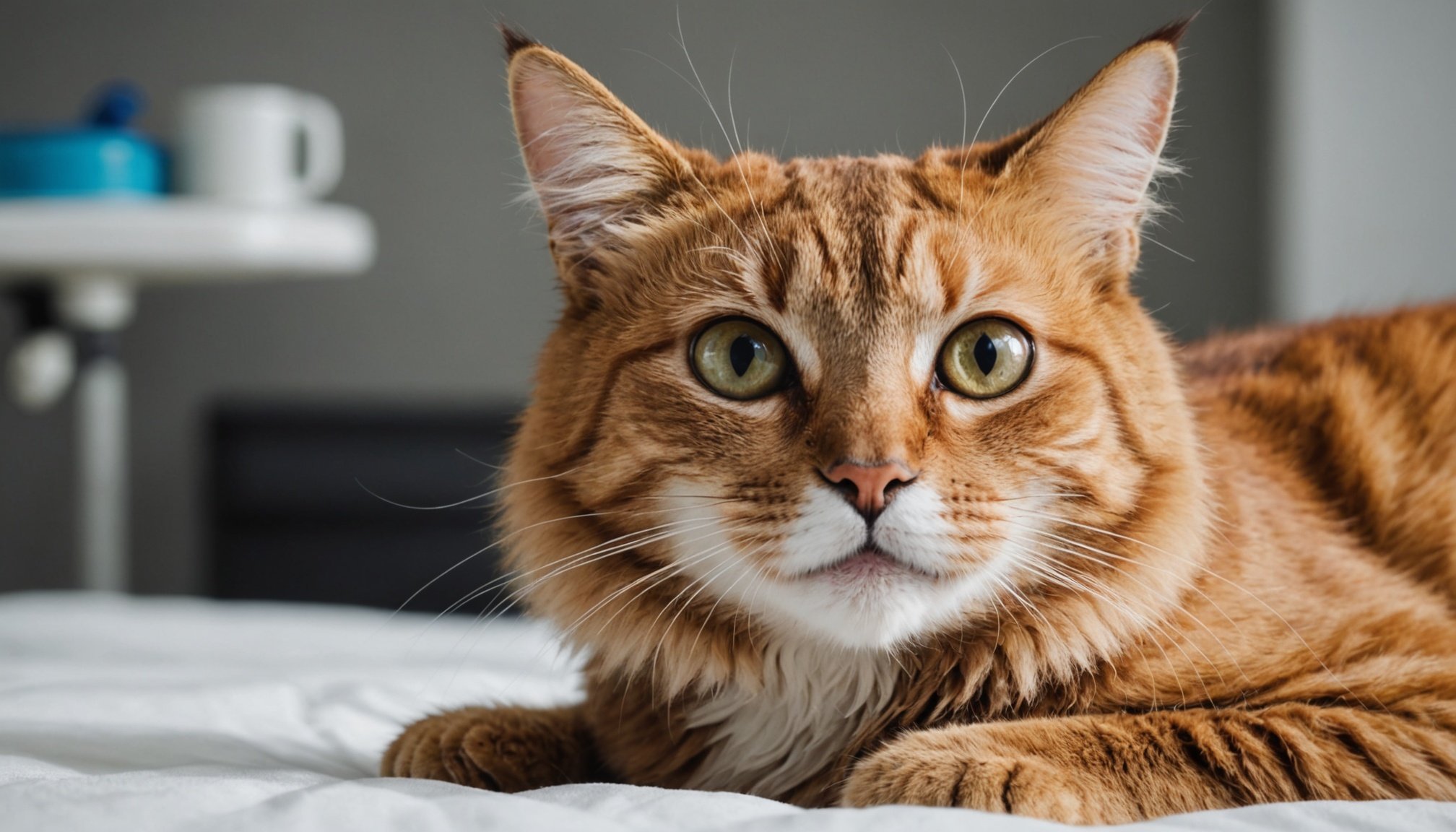Understanding Dental Surgery in Cats
Dental surgery is a common procedure to address various feline dental procedures aimed at improving or maintaining a cat’s health. These surgeries often involve the removal of teeth, treatment of cavities, or addressing gum disease, all crucial for preventing future health issues.
The importance of dental health in cats cannot be overstated. Poor dental health can lead to severe health problems, including infections, pain, and difficulty eating. Regular vet checkups are essential for management and prevention.
Also to read : Expert advice on effortlessly unveiling new toys to enchant your cat
Typical outcomes of dental surgery are generally positive, resulting in a considerable improvement in a cat’s overall health and comfort. Cat owners should expect their pets to experience some discomfort immediately post-surgery, which typically diminishes within a few days. Ensuring proper care and monitoring during the recovery phase is vital to facilitate healing.
Understanding the implications and benefits of dental procedures is important for responsible pet ownership. With the correct post-operative care, cats often lead healthier, more comfortable lives after these treatments. Consistent vet consultations and adequate aftercare not only ensure a smooth recovery but also contribute to the long-term well-being of your furry companion.
Topic to read : Ultimate guide to pampering your bambino cat: top care tips for hairless breed enthusiasts
Preparing Your Cat for Surgery
Proper pre-operative care is crucial to ensure that a cat is ready for surgery. Cat surgery prep begins with scheduling a thorough check-up to assess the cat’s overall health. Vet consultations are essential to address any underlying conditions that might increase surgical risk.
Minimising feline anxiety is vital before the operation. Exposure to travel and carriers can be stressful, so acclimating your cat to these elements several days prior can help reduce fear and anxiety. Introduce calm-inducing strategies, such as pheromone sprays or comfort items like familiar blankets.
Dietary restrictions play a significant role in preparation. It is generally advised to withhold food for about 12 hours before the surgery to prevent aspiration during anaesthesia. Discuss specific guidelines with your veterinarian, as they may vary based on the cat’s age, health, and the type of procedure.
On the surgery day, maintain a comforting and calm environment. An early arrival to the clinic helps avoid hurried, anxious feelings for both the cat and owner. Bringing along favourite toys or blankets can add familiar scents, further reducing anxiety.
By efficiently approaching this phase with preparedness and understanding, you significantly contribute to a successful surgical experience and foster a smooth recovery transition.
Post-Surgery Care Essentials
Following dental surgery, effective post-operative care is crucial in facilitating your cat’s recovery and ensuring their return to full health. The immediate steps you take after bringing your feline friend home are vital. Begin by setting up a quiet, comfortable space where your cat can rest undisturbed. A cosy bed and a warm blanket can be comforting and aid in smoothing the transition back home, promoting feline wellness.
It’s essential to closely monitor your cat over the next few days, observing any changes in behaviour or appetite. Watch for signs of distress, such as excessive drooling or reluctance to eat, which could indicate discomfort or complications needing attention. Offering small amounts of water at regular intervals supports hydration without overwhelming your cat’s system.
Post-operative care involves maintaining a stress-free environment. Limit activity and prevent interactions with other pets to avoid unnecessary stress or injury. This peaceful setting is integral to your cat’s recovery process, supporting their feline wellness.
Be mindful that the after-effects of anaesthesia might temporarily alter your cat’s behaviour. Gradually reintroduce their regular routine as they regain strength, and always remain attentive to their needs during this critical period of healing.
Managing Pain and Discomfort
Following a dental procedure, effective cat pain management is essential for a smooth recovery. Recognizing signs of pain in cats can be challenging, as they often hide discomfort. Key indicators include decreased appetite, hissing, hiding, or reluctance to move. Identifying these signs early allows for timely intervention, ensuring your feline’s comfort.
Feline analgesics, prescribed by veterinarians, offer effective relief. Medications such as buprenorphine or gabapentin are common choices, tailored to individual needs to minimize side effects. Never administer human medications to cats without professional advice, as they can be toxic.
Enhance recovery with non-medical comfort strategies that provide additional relief. Create a quiet, warm space for resting, away from household noise and other pets. Soft bedding and gentle petting reassure a postoperative cat, reducing stress-related discomfort.
Pay attention to behaviour changes indicating discomfort and adjust your approach, focusing on gentle care. Offer familiar toys or scents to ease anxiety, complementing the medication’s effects. Remember, attentive care promotes recovery and ensures a smoother transition back to typical behaviours, highlighting the importance of prioritizing your cat’s comfort post-surgery.
Dietary Recommendations After Surgery
Following dental surgery, cat nutrition recovery plays a crucial role in facilitating your feline’s healing process. During the initial days post-surgery, opt for soft and easily digestible foods. This approach ensures minimal discomfort and prevents further irritation to the surgical site. High-quality wet food or specially formulated recovery diets are often recommended to support optimal healing.
Hydration importance cannot be overstated, as maintaining adequate fluid intake is pivotal for recovery. Encourage your cat to drink water by providing a fresh supply and considering a cat water fountain to increase their water consumption. Ensure water bowls are easily accessible in their rest area to promote frequent hydration.
While soft foods are initially recommended, gradual reintroduction to your cat’s regular diet should commence as their condition stabilizes. This gradual process helps them transition smoothly without causing digestive upset. Begin by mixing small quantities of their usual diet with the post-surgery food and progressively increase the portion over several days.
Maintain vigilant observation during this dietary transition for any signs of adverse reactions. Feline feeding tips include offering smaller, more frequent meals and monitoring their willingness to eat and drink. Such attentive care is indispensable in safeguarding a successful recovery, allowing your feline friend to thrive post-surgery.
Recognizing Signs of Complications
As your cat recovers from dental surgery, being vigilant about cat surgery complications is crucial for ensuring their well-being. Understanding the difference between typical post-surgery behaviours and potential post-operative concerns can prevent serious issues and ensure prompt intervention.
Common Signs of Complications
Key indicators of complications include swelling that increases instead of decreasing, persistent bleeding, or pus discharge from the surgical site. These symptoms may suggest an infection or other underlying post-operative concerns.
Other signs could involve changes in your cat’s behaviour, such as prolonged hiding, aggressiveness, or disinterest in activities they previously enjoyed. Watch for unusual crying or discomfort, which often indicate pain beyond normal recovery expectations.
Vet Consultation When Necessary
If such symptoms arise, it’s important to contact your veterinarian promptly. As a pet owner, recognising these complications can significantly impact your cat’s recovery process. Early intervention might involve additional treatment or medication adjustments, emphasizing the need for timely vet consultation.
Remain observant during the recovery phase, and entrust professional vet consultation for any suspicions of complications. This proactive approach not only ensures safety but also facilitates a smoother healing journey, safeguarding your companion’s health.
Follow-Up Veterinary Care
Ensuring proper vet follow-up is a key element in maintaining your cat’s long-term oral health after surgery. These post-surgery checkups are crucial as they allow veterinarians to monitor the healing process and assess if any post-operative concerns arise. During these visits, expect the vet to examine the surgery site for signs of infection or complications, adjust pain management plans, and discuss any ongoing nutritional needs.
Regular feline health monitoring not only assists in a smooth recovery but also in preventing future dental issues. Scheduling follow-up appointments ensures any potential problems are addressed promptly, allowing for timely intervention and care adjustments. In many cases, these checkups could reveal early indicators of more serious conditions, offering a chance for immediate treatment.
Besides immediate post-operative appointments, adopting a long-term dental care routine for your cat is essential. Regular teeth brushing, specially formulated diets, and scheduled professional cleanings can significantly enhance your pet’s oral health. Establishing this routine contributes to overall feline health, decreasing the likelihood of requiring future surgeries. Keep open communication with your vet to receive tailored advice on maintaining your cat’s dental health, fortifying their well-being over the years.
Resources and Support for Cat Owners
Learning about cat owner support and accessing reliable feline health resources is vital for addressing your pet’s needs effectively. Knowing where to turn for dental care education can empower you to make informed decisions regarding your cat’s health, especially when dealing with dental procedures or post-operative care.
Recommended Resources
- Vet Clinics: Frequently offer brochures or booklets about feline dental health.
- Online Platforms: Websites such as the American Veterinary Dental Society provide extensive guides on maintaining your cat’s oral health.
- Books and Articles: Look for publications by reputable veterinarians or animal health experts.
Support Networks
Engaging with support groups and online forums can offer valuable insights and shared experiences from other cat owners. Forums like The Cat Site or Reddit’s cat communities offer spaces to discuss concerns and receive advice.
Collaborating with Your Veterinarian
Building a strong relationship with your vet encourages ongoing support and tailored advice for your cat’s specific needs. Regular consultations provide opportunities to raise concerns and adapt care plans, enhancing your confidence in managing your feline’s long-term health. Such partnerships are indispensable for effective dental care education and proactive health strategies.











